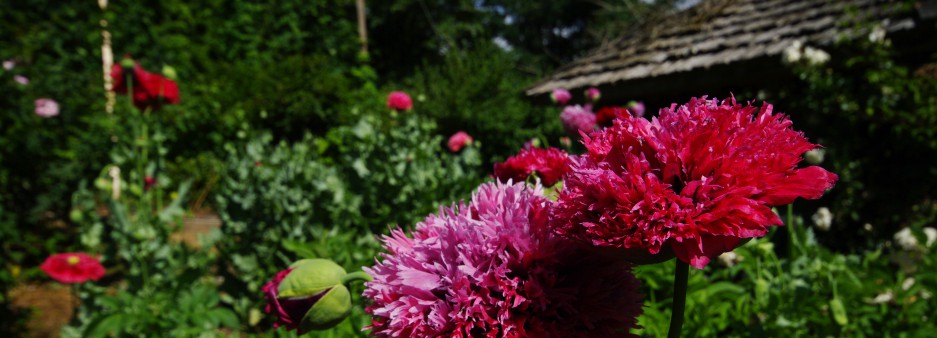My compost pile is cooking!
One of the biggest reasons I wanted chickens was not for the eggs, but for the manure. We (or rather our poor clay fill soil) can use a lot of compost, and last year I didn’t get the volume that I wanted. Chicken manure and pine shavings, here we come! In fact, I’ve even decided not to use the deep litter method for the chickens (where you keep topping up the pine shavings and only clean out the coop once or twice a year) because I want the volume in my compost.
I’ve been suspicious about how long it might take to break down the pine shavings, though, as wood is very high in carbon and is usually the last thing in the compost pile to disappear. In fact, in the compost I made last season, the straw (which has much less carbon than wood) is still mostly intact, even though everything else has long since become brown and crumbly.
To break down materials high in carbon, of course, you need a fair bit of nitrogen, which is why the chicken manure is a good match. But I had no idea, really, what a good balance would be. So I just waited until the shavings looked pretty saturated with poop, and then cleaned out the coop. But to mitigate the high carbon of the shavings, I thought I’d better really soak my chicken litter as I piled it into the compost bin. Then I thought to really help things along, I would add another big nitrogen source. I scoped out the local coffeeroaster and picked up a garbage bag full of coffee grounds, and mixed that in too.
The next day, the compost heap stunk to high heaven! I thought I’d better turn the pile a bit. When I did, steam started immediately rising out of the heap and my eyes started to water. What I was smelling was ammonia–the pile was getting so hot that the nitrogen was burning off as ammonia gas! Not good. Not only is the ammonia not exactly healthy, but the idea behind adding manure and/or compost to the garden is to increase the available nitrogen in the soil, and burning all the nitrogen in the composting process rather defeats the purpose.
What was the problem? The pile was too wet, and had too much nitrogen–“greens”–in the mix. The chicken manure had more kick than any nitrogen source I’d ever used! In hindsight, I probably didn’t need the coffee grounds. 🙂
So, we added leaves, shredded paper, and some coffee chaff, and turned the pile again. The next day, the smell was still pretty potent, so we repeated the process. By that time, some of the kitchen waste that we’d mixed in the original pile had literally been turned to ash. But the smell was waning, and the moisture content seemed to be levelling off. Success!
At this rate, we should have a few amazing cubic yards of compost for the garden in just a few months. Look out clay soil, organic matter is coming your way!

Wow Toni, that’s hot.
(chuckling to myself)
Heehee! 🙂
Thanks for the information, off I go to shred paper and gather leaves!
Did you add large amounts of Hay to your compost? When bacteria breaks down hay it literally releases ammonia and with lots of chicken manure can create that heat. Chicken manure is a very high Nitrogen source..if added to cow manure which is missing a lot of nitrogen it regenerates the cow manure creating a more balanced mix for you compost. Also the more oxygen the higher the temp. I recommend getting a thermometer to test the pile so you know when its a good time to turn it or add more carbon source. If you want to create mushroom compost high temps are great so mix it up with what you have access to. Good Luck!